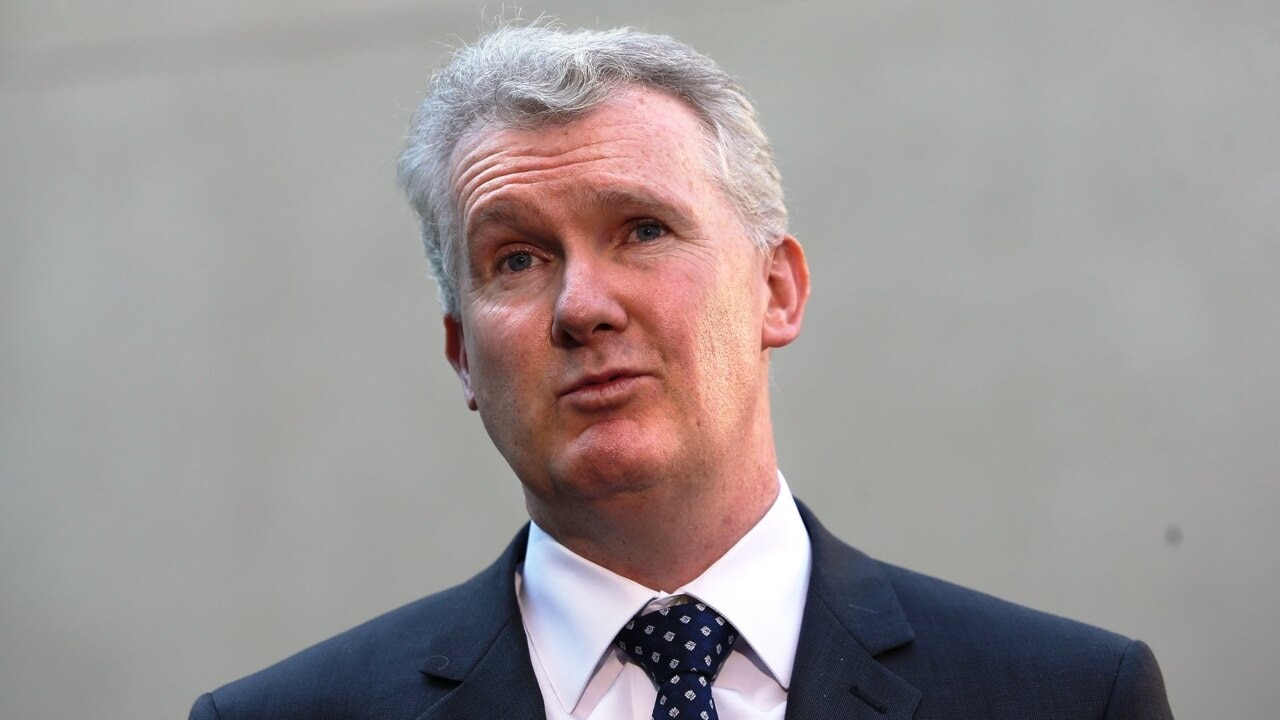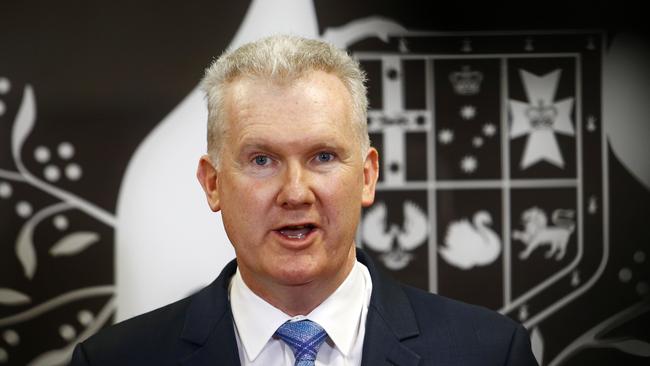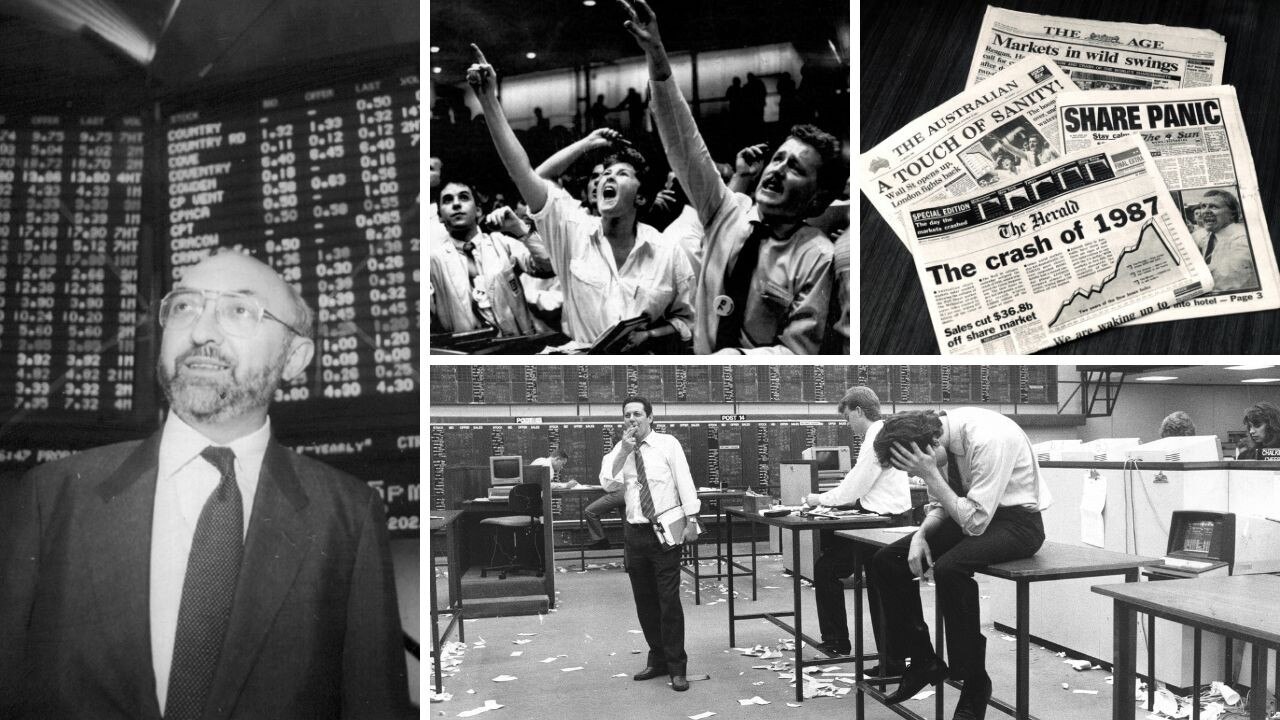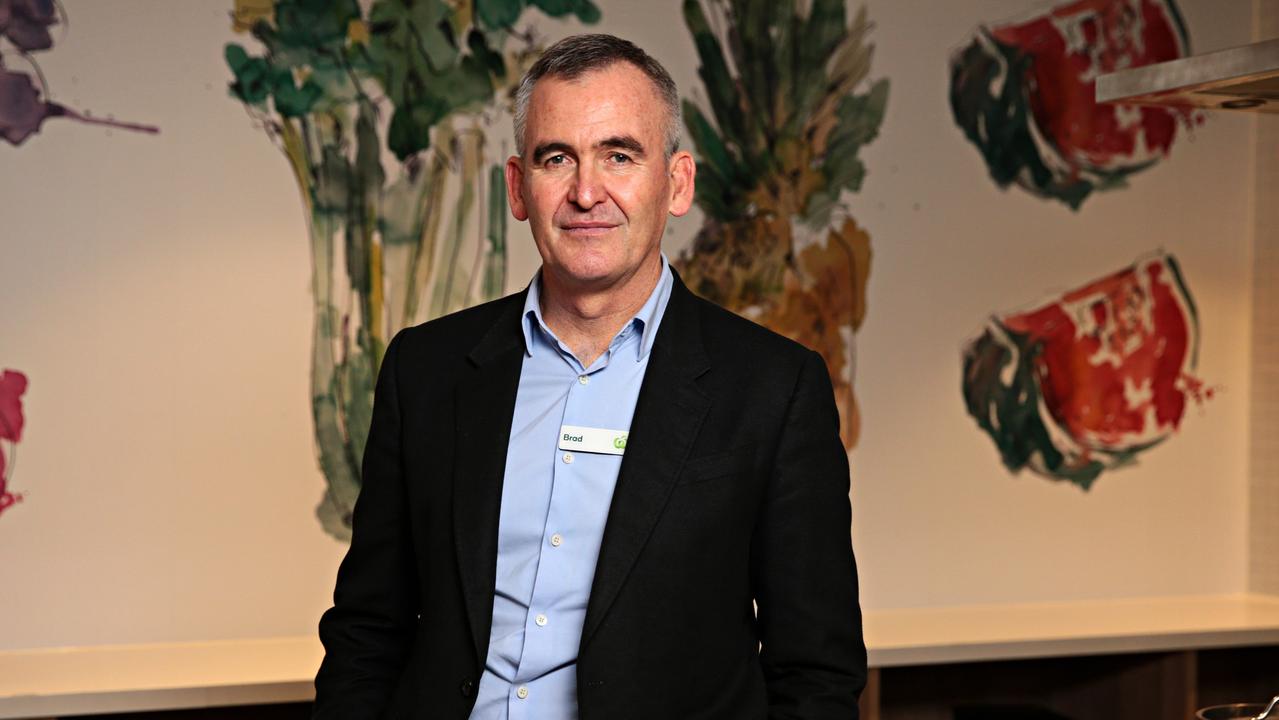Why IR minister Tony Burke is the biggest threat to higher interest rates, not wages
Workplace Relations minister Tony Burke has once again confirmed the federal government’s relentless anti-business and anti-productivity campaign is the biggest threat to higher rates.

Terry McCrann
Don't miss out on the headlines from Terry McCrann. Followed categories will be added to My News.
Our 21st century Clyde Cameron Version 2.0 – Workplace Relations minister Tony Burke – has again confirmed the Albanese Labor Government’s relentless anti-business and anti-productivity campaign is the biggest threat of sustaining too-high inflation and forcing higher interest rates in 2024.
‘Both’ Reserve Banks will be comfortable but not ecstatic about the latest Australian Bureau of Statistics wages data Tuesday, showing average wages across the economy (the Wage Price Index) going up 0.8 per cent for the June quarter and 3.6 per cent for the 2022-23 year. That’s, the RBA, so to speak, of departing governor Philip Lowe, and the ‘new’ RBA – in more ways than one – of incoming governor Michele Bullock.
There was already all but-zero chance of Lowe delivering a rate rise at his last meeting in three weeks; and similarly with Bullock at her first meeting in October. There’s now no chance. The duo were essentially on a unity ticket to make the next big rate call at the RBA’s famed, and occasionally infamous, November Cup Day meeting.
That comes two weeks after the September quarter inflation data – data, that was not only going to largely determine what happened on Cup Day, but indeed the course of rates into 2024.
As I wrote after the August meeting two weeks ago, inflation would – broadly – have to jump to at least 1.5 per cent for the September quarter, to trigger a Cup Day hike. Subject to ‘everything else’ of course – of which the biggest was what was happening with wages.
This brings us back to the latest numbers and minister ‘Clyde’ Burke. As Lowe has been continually warning, wage rises around 4 per cent are fine and compatible with getting inflation back below 3 per cent without having to whack the economy, and jobs, with higher interest rates, on the basis of one big, humungous, proviso.

That productivity picked up from its abysmal, pretty much, zero level. So broadly he – and Bullock – would be happy with that sub-4 per cent annual wages growth of 3.6 per cent.
What would concern them is the detail, showing acceleration in the number of individual deals delivering hikes in the 5-6 per cent range.
If that became general, that would threaten – absent serious productivity gains –to lock-in 4-5 per cent, and even higher, inflation. As the minutes of the August RBA meeting revealed Tuesday, that would force the RBA to go back to rate hikes. Enter Clyde 2.0. The original Clyde, back in 1972, set out to make big public sector pay rises the ‘pace-setter’ for the entire economy.
He ‘succeeded’, unleashing an inflation surge, sending the economy spiralling. And, current PM take note, helped destroy the Whitlam government. Clyde 2.0 is embarked on a modern version, backing the national wage increase of 6-8 per cent, including the extra super.
But also, critically, with a range of anti-productivity measures to re-regulate the labour market and thereby force unit labour costs to grow even faster than wages.
This Clyde 2.0 outcome – in 2024 and beyond – would be all-round disastrous for workers. Yes, maybe slightly higher wages in the short-run. But then higher inflation, higher interest rates, job losses and real wages cuts after that.



